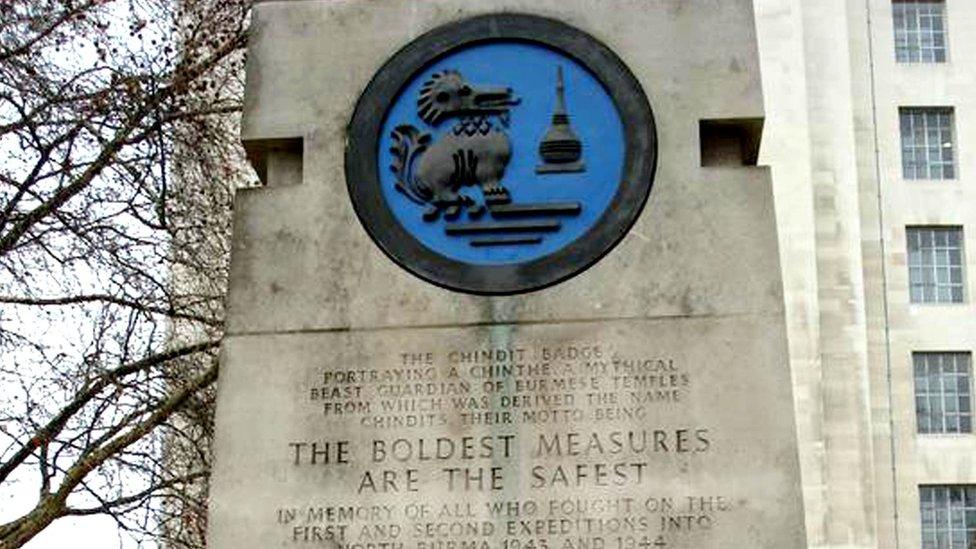VJ Day marked under British PoW flag in Swansea
- Published
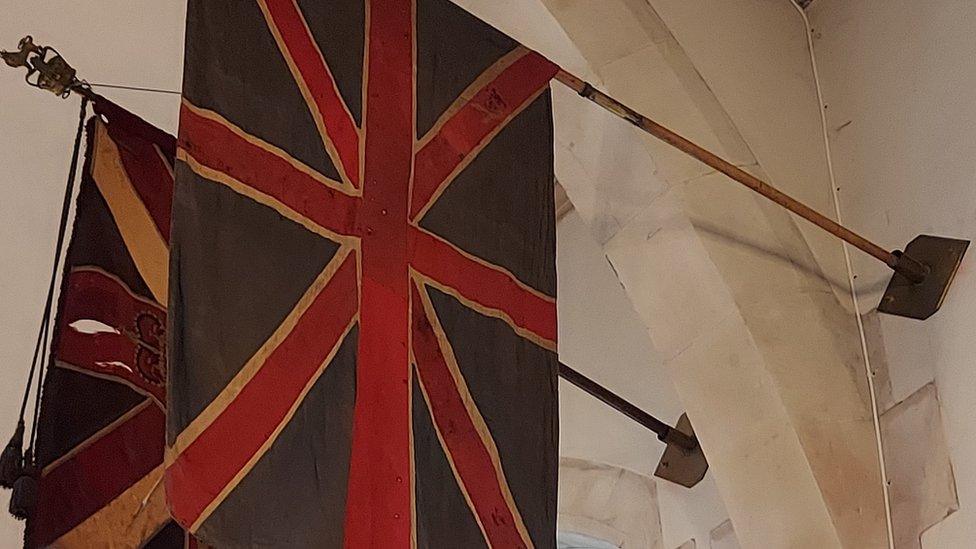
The flag was made by British Prisoners of War in Indonesia
When parishioners at a Swansea church marked the 75th anniversary of Victory over Japan Day, it was under a Union Flag with an extraordinary history.
The flag was sewn by British Prisoners of War (PoWs) at a Japanese camp in Indonesia during World War Two.
It comprises white material from their loincloths, the blue mosquito nets of the Japanese guards and the red lining from the straw hats of Indonesian native troops.
VJ Day was marked on Saturday.
Used to drape makeshift coffins during funerals at the camp, it was donated to St Mary's Church in Swansea in 1970.
It now hangs on the north wall of the nave, alongside the regimental colours of the 1st Battalion of the Welsh Guards, and a short description of its history.
Canon Ian Rees, Rector of St Mary's, said: "We are honoured to have this flag. It reminds us of the great sacrifice made by others and the struggles they faced."
The flag was brought back to Wales after VJ Day by Capt Sydney Armstrong, who commanded the British prisoners in "Camp Three", and Gunner Penry Markham Rees from Skewen, who went on to become head teacher of Bassaleg Grammar School near Newport.
Together the pair survived starvation rations and brutal forced labour while constructing the Pekanbaru Death Railway, external.
Designed to connect Pekanbaru to Muaro to strengthen the military and logistical infrastructure for coal and troop shipments, the track in Sumatra was completed on 15 August 1945 - the very day of the Japanese surrender.
Despite never being used for its intended purpose, it is estimated that the railway cost tens of thousands of lives among the Indonesian forced workers, "Romushas", who were buried on the spot where they died, often by the side of the railway.
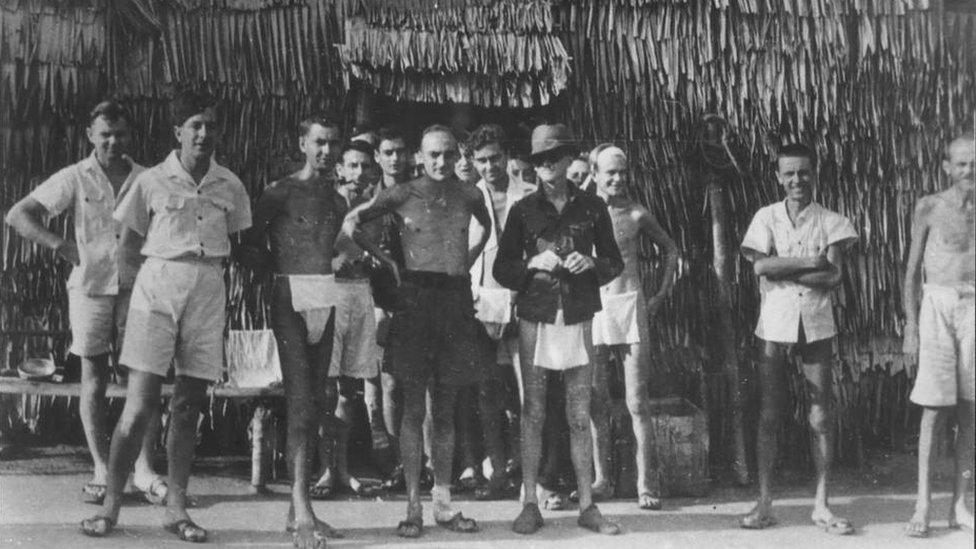
Camp Three - which lost 30 men including three after the hostilities ended
More than 800 prisoners died during or shortly after the works, 182 of those British.
Often veterans bitterly described the Far East campaign as the "Forgotten War" after the celebrations of Victory in Europe in May of 1945.
However, Paul Murray, a parishioner at St Mary's who has researched the flag's history, says Pekanbaru was the "Forgotten Death Railway".
"Almost everyone will have heard of the Bridge on the River Kwai, on the Burma/Thai railway, maybe through the romanticised 1957 film, where some 12,000 prisoners of war lost their lives.
"But the Pekanbaru railway became known as the 'forgotten death railway' because it was outside the battle area.
"On Camp Three, there were 30 deaths, including three British who died after hostilities had ended.
"They were buried in the camp cemetery and would probably have had the 'St Mary's Union Jack' covering their bodies for burial.
"After the war all these bodies, apart from one, were exhumed and now rest at the Jakarta War Cemetery."
- Published15 August 2020
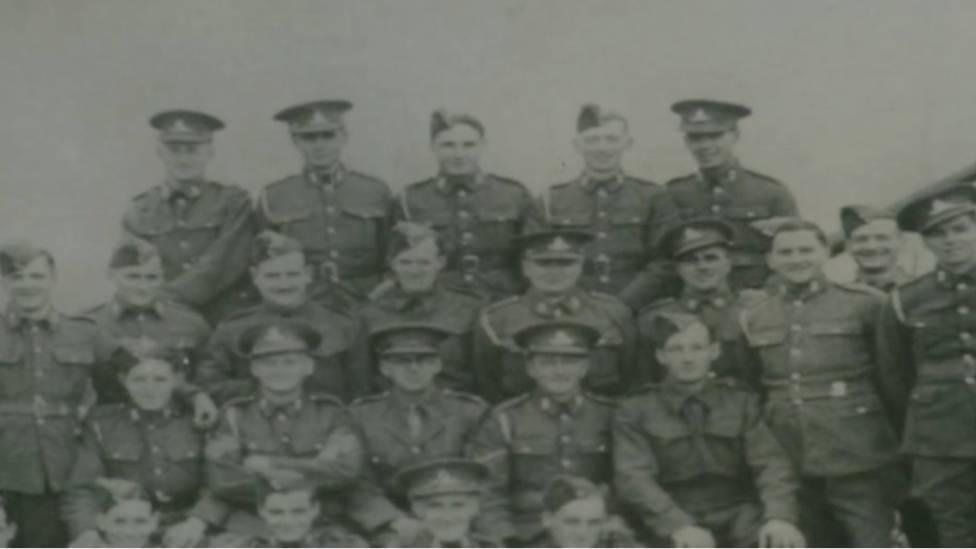
- Published14 August 2020
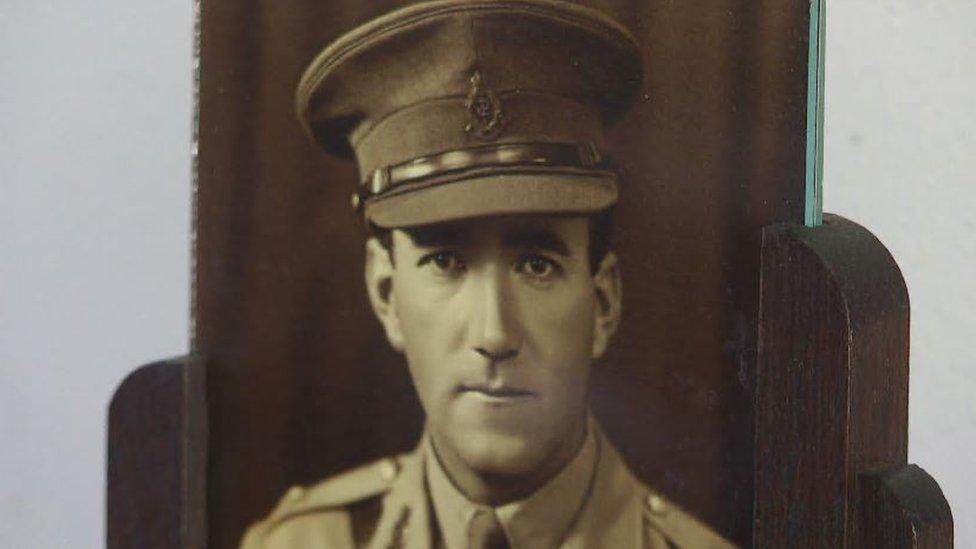
- Published14 August 2020
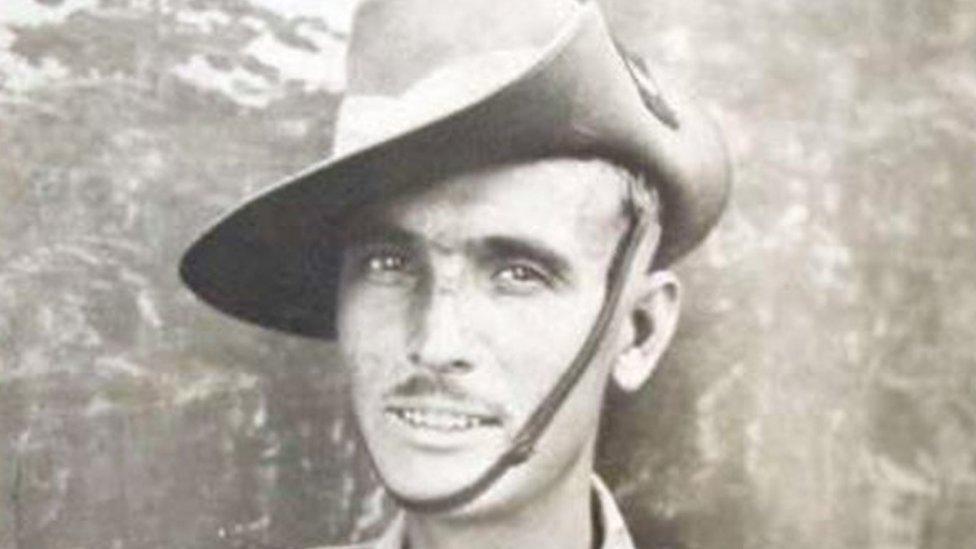
- Published13 August 2020
